To wrap up 2022, I am sharing 10 lessons I learned working 4 years as a Product Design Lead in my previous role at HSBC.
Working in a big corporation like this is complicated, I have to deal with a lot of stakeholders, understand the rules, the un-spoken rules and at the same time trying to help the design team gain more influence.
These are the lessons I wished someone could have taught me when I first started. Hopefully you found these useful and avoid the same mistakes I made!
Warning: It is a long read, but I promised you will find value in it!
1. There is a glass ceiling that’s ok!
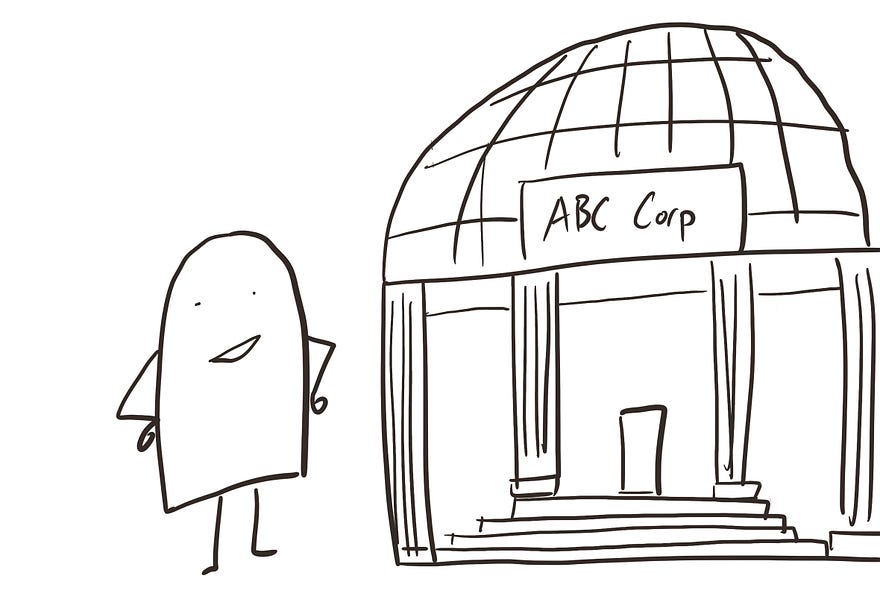
Let’s face it, it is unlikely a designer will ever become a CEO in a traditional bank. Having a “Head/VP of Design” or “Chief Design officer” is as good as it gets. It doesn’t matter whether management truly support design team or not, there is a glass ceiling. Why? Two reasons:
- Nature of business
- You are not actually building the product
Nature of business
Instagram cannot exist without their product because the product is the business. A traditional bank doesn’t sell digital products, their apps is just a way to make your day to day transactions easier, it makes money through mortgages, credit cards, loans and all other kind of financial products.
Just because a traditional company “went digital” doesn’t magically turn them into a digital business. In simple words:
- The bank is not too screwed if nobody uses their app.
- Instagram is totally screwed if nobody uses their app.
Bluntly put, the app just needs to be good enough for a traditional bank. If the rates and fees are good, customers has a very high tolerance level to their digital products. Hell, they don’t even want to stay on a banking app for that long, who really wants to use a banking app anyway? Have you heard anyone addicted to their banking app? Me neither.
You are not actually building the product
When you design and UI for the bank for whatever product they are selling, you are not building the product, you are building the digital representation of the product they are selling. Their “product” is whatever mortgages, credit cards, loans or wealth portfolio they come up with. You see, their product already exist in a form of digital document that is 30 pages long, and what you build is a sign-up form or dashboard for these products.
Wouldn’t it be nice if the UX is really nice? Of course! But in the end of the day, the specific details on product such as “rates” or “returns” are what matters, not the design.
To recap, the nature of business limits the impact you are going to make since you are not actually building the product. And that’s ok! Design team doesn’t need to make it to the top for every company out there. It is important to understand strategically what you can gain from each company you work for. The ceiling doesn’t matter as long as there is still room for you to grow and someone to learn from.
For me, my goal was to become a better strategic thinker and a better presenter. I had a great manager, and worked with other Service Design Leader and Design System Leaders that I learn a great deal from and that’s why I stayed for a long time even though I understood eventually I will hit a glass ceiling. Always have a plan on what you want to gain for each role and move on when you have learned everything from there.
2. Learn to influence or you are doomed
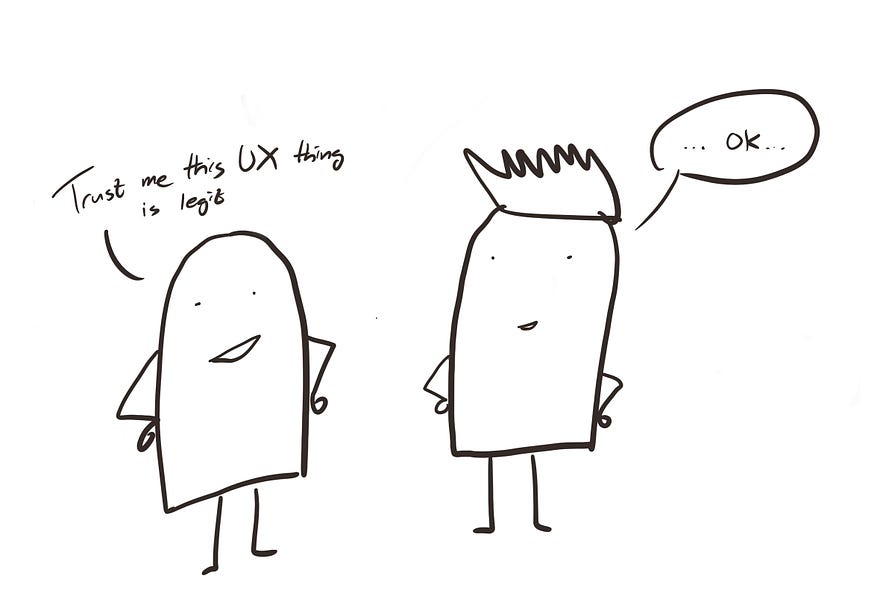
It is extremely important for us as designers to understand the fundamental reason why influence is an important skill to master as a designer. Everyone said so, but why? For getting a raise or promotion? For a happier design team? For your mental health? I argue that it is a matter of survival for the design team. Here is why:
- A team needs resources to survive
- Every team wants to survive (aka have a job and don’t get fired)
- There is limited resources in a company
A team that doesn’t have resources does not survive by definition. Following the same logic, the maximum survival strategy is to have as much resources as possible, ideally ALL the resources of the company.
Realistically, you can’t control all the resources in a company, but the bigger the pie the better. To get resources, you need people that owns the money to give it to you. People usually do it by:
- Convince decision maker to give them more (you should do this)
- Undermine other teams so decision maker won’t give money to other teams (you shouldn’t do this)
Why can’t we just chill and not do anything? Why can’t you remain a small team and just do your own thing? Well, because the design team consume resources. Other team has the incentives to want to kick you out if they don’t think you are valuable so they can have a bigger piece of the pie (according to point #3 and the maximum survival strategy stated above)
Furthermore, there are 2 more uncontrollable factors that you can count on that are guaranteed to happen if you remain in the same role long enough. They are:
- Economy going south (already happened as per writing this article)
- Old management leaves and new management comes onboard
Whenever the above thing happens, the first thing the leadership team do is to see which team is non-essential. If you want to survive, part of your job is to constantly remind people with money why your team is essential. The art of convincing leaders and peers from other department is called Influence. The better you are at do it, the safer your team (and your self) is when things eventually go south.
3. Ask for forgiveness, not permission
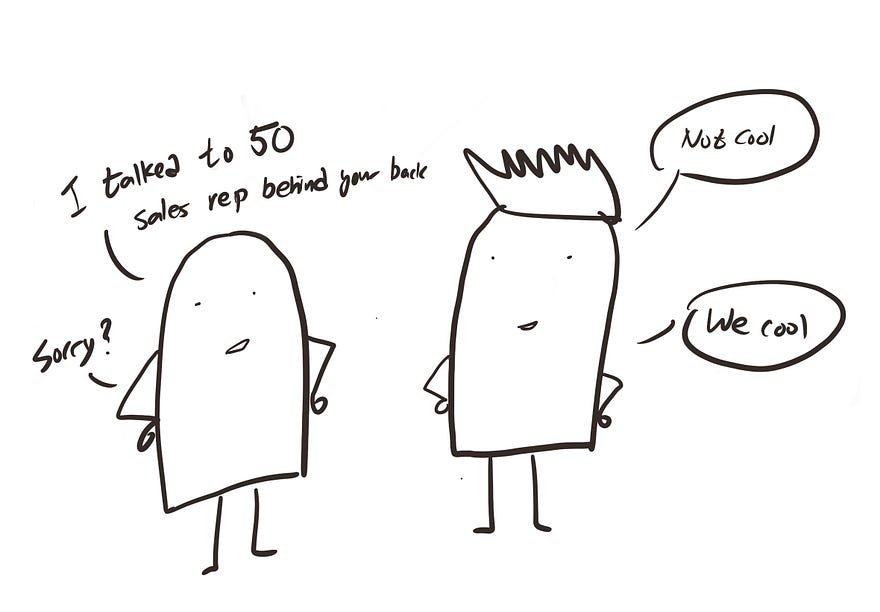
It is a big company, if you ask for permission to do the right thing all the time, you can’t get shit done. The key is to do it anyway and think of a good way to say sorry if people complains. Make sure to inform your boss so they have your back before you do that thing.
For example, when I worked in the Staff digital team responsible for building tablet apps for staff to serve customers in the branch, I wanted the front-line staffs to test my design on their tablet. If I emailed the branch manager, I am 99.99% sure they will reject my request because it will “distract their work” and we didn’t have a relationship.
So I just went to the branch and have a “private” conversation with the staff there. Nobody knew I wasn’t a real customer and if the staff generally want me to go away they will just say so. Truth is, everyone in the branch is happy to be beta testers on new features and they didn’t report me to their boss because I made them feel important and I genuinely value their feedbacks.
A lot of times, what you think you cannot do is just a mental barrier. You can always do something, there are just consequences that may or may not occur. If you are in doubt, ask yourself “what is the worse that could happen?”, the reality is probably not as bad as you think. My general rule of thumb is do whatever you think helps your team as long as it won’t get you fired. Worked great for me so far.
4. Understand the REAL WHY
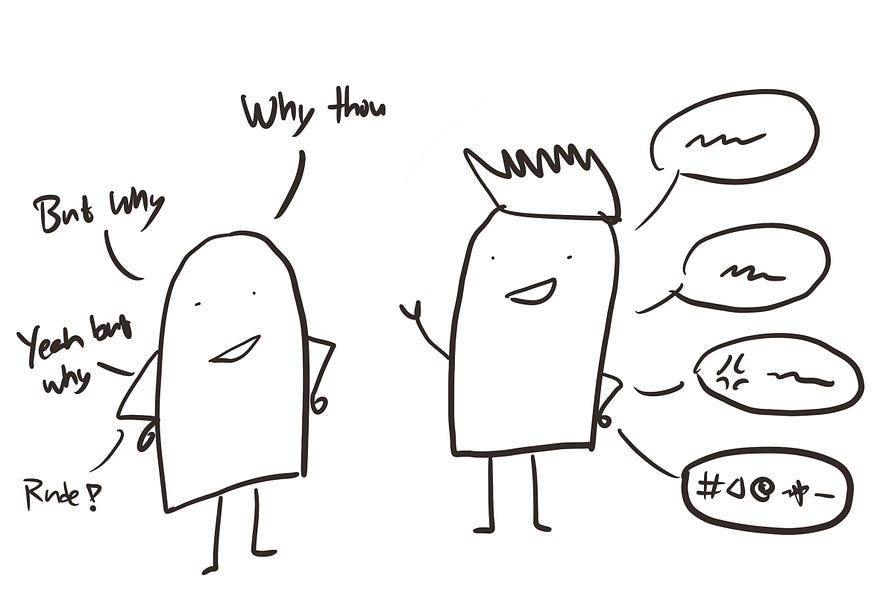
The difference between an order taker and a professional is the ability to take control of the situation. A professional knows what they are doing and won’t let other people boss them around. Have you seen a great doctor just let other people tell them how to do their job? No, they take control of the situation and ask questions.
Business said X, Legal said Y. Why? who exactly said that? Who the hell is “business” or “legal” anyways? Behind any enquiry, there is a real human behind it, why can’t we as designers apply empathy and understand their hopes, fears and dreams? What is their concern? What worries them? Is it a power move so that they feel they are in control of the situation?
In other cases, you want to show strength as well. Show people you won’t back down if the other side is not prepared for a fight. Anyone can throw out unsolicited opinion, very rarely do people work hard to form comprehensive statement based on facts. Have the courage to challenge what people say by requesting evidences to back it up!
For example, if stakeholders insist to change a design that has worked in the past but they want to change it because they have a different OPINION, kindly remind them you do value their opinion (maybe not really, but you say that anyway because your parents taught you manner so you act nice), but this design has proven to work in the past, “what” are the evidence to support what they believe what they suggest will improve the UX? How confident are they?
If you change your design because other people demand it every time regardless of their seniority, you are a vendor, you are “just here to make things pretty”. You are an order taker. If you have a choice between being an order taker or being a professional, which would you choose? I know my answer.
5. Own your boundaries
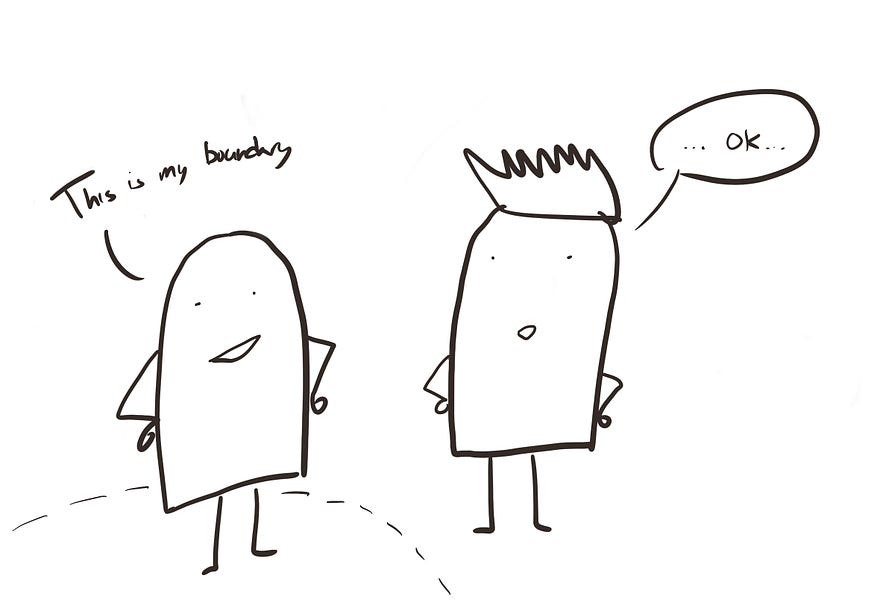
You need to let other know your boundaries and stick to it, or someone else will set it for you. If you don’t want to join a lunch meeting, don’t join. If you don’t want to join a 7pm meeting, don’t join. (This doesn’t apply to teams that cross time-zone, in this case, do the fair thing where sometimes you have late meetings and other times the person in the UK does the same thing).
You have more power than you think. Sometimes we felt that we can’t say no to unrealistic demands, but what is the worse thing that can happen if you reject a stakeholders demand? Come and drag you to a meeting? Download Figma and draw it themselves?
Probably nothing.
The best they can do is complain to your boss, but if you have articulate your point clearly with evidence to backup your decisions and let your boss know up front, you have nothing to fear.
Don’t let others dictate your workflow
Inevitably, someone will ALWAYS send an “urgent” email and demand a reply “ASAP”, as if whatever project they work on is always the most important project for the company. You will feel the impulse to pause everything you do and reply to that email.
Don’t do it. Two reasons:
- It probably isn’t urgent
- Rushing your reply will always make the situation worse
It probably isn’t urgent
Think about it, what is really “urgent” in our role? Do we control the finance operation or the IT systems? Will the designers be able to do anything if someone hacks the system? Unless payroll made an accounting error where your CEO’s three-million bonus now shows up in your bank account and they want it back right now, nothing is urgent.
Just because someone higher up wants an answer quickly so they don’t have to remember it and ask it again in the future doesn’t mean it’s urgent. It just means they will get annoyed if they can’t get an answer now. Just because someone came up with a deadline without consulting you doesn’t make it urgent either. It is their problem.
What happens most of the time is that nothing happens if you don’t reply to the email immediately, the other party will often send a follow up email a day or two later chasing you or send you a Slack message at 6pm the same day. As a rule of thumb, if the matter can wait until 6 pm or one to two days later, it is by definition not urgent.
Have a list of priorities for your team and yourself. Everyday, create a checklist with no more than 3 items and work ONLY on those things. Mentally have a Standard Operating Procedure (SOP) on when you check your communication channels and how long it takes for your to reply. I set a rule for myself where I batch read emails in a specific time in morning and in the afternoon and never read it in between, this way I am free from distractions and focus on real work.
If an email comes it that do require your immediate attention, weight against your checklist and think “If I do not complete the tasks on my checklist and reply to these emails, will it benefit myself or my team”? Only reply to those emails if it is the later case. In the end of the day, you are not judged on how fast you reply to emails, you are judged on how well you can perform on your job. You work on your priorities, not someone else’s.
Rushing your reply will always make the situation worse
OK, let say the email is truly urgent and a project can’t go live today if you don’t reply to it right now. What do you do? Write a reply immediately and send it? Wrong.
Everything you wrote in haste are almost always not thoughtful enough and everything you wrote ill be used against you. I never had a good experience when I reply quickly to an important email, either my facts is off or the tone is wrong and I end up writing multiple follow up emails or have to eventually jump to a Zoom call to explain things.
Take your time to collect information around the subject and compose a response but DON’T SEND IT YET. Send it to someone senior or someone you can trust for a second opinion to ensure you have covered things from different perspectives when the email is truly urgent.
6. Process and documentation are your best friends
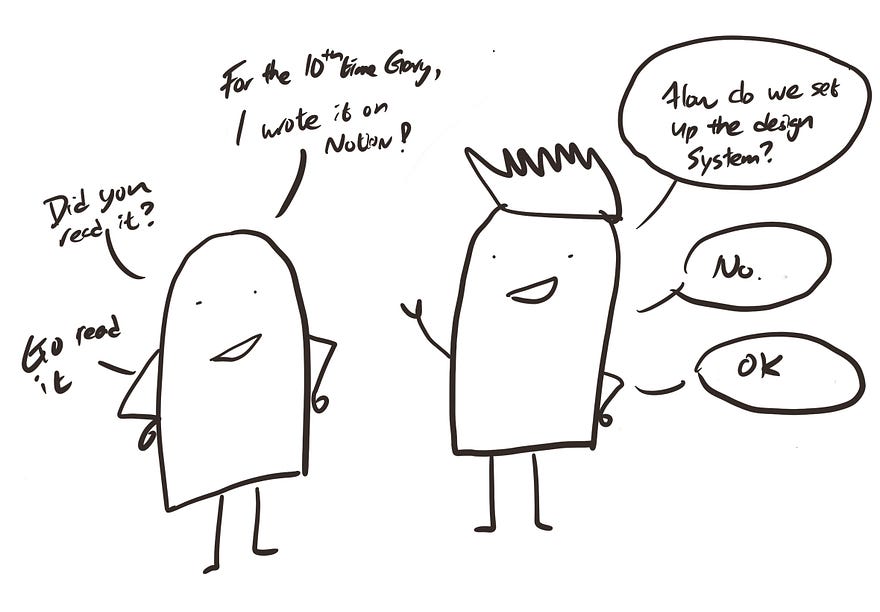
If you find yourself explaining same things over and over again to some people, it is time for you to create a process. There are two key benefits of creating a process:
- Process allows you to do more work with less time, why? Because once you wrote down how something works once you can point people towards that instead of explain things 1000 times. We are in business of deep work, this means that it takes time for a designer to warm up to get into a state of flow. While it may take you 10 minutes to explain how some things work, it will take you at least 30 minutes to warm up again to get into the state of the flow.
- Another benefit of a process is it also helps other to repeat the success you had so you are making the team become more productive. For example, create scripts for the team to answer common stakeholder questions regarding design rationale. This is one of the ways you can scale your team and make yourself become more valuable because you remove yourself as the bottle neck.
Same logic applies to things like creating documentation on decision made for the project. I can’t remember how many times my team asked me for a decision I made about a design and it was a pain to go through all the email and Slack messages. Now I just simply wrote down important product decisions and ask whoever to refer to that document.
7. Policies gives you credibility
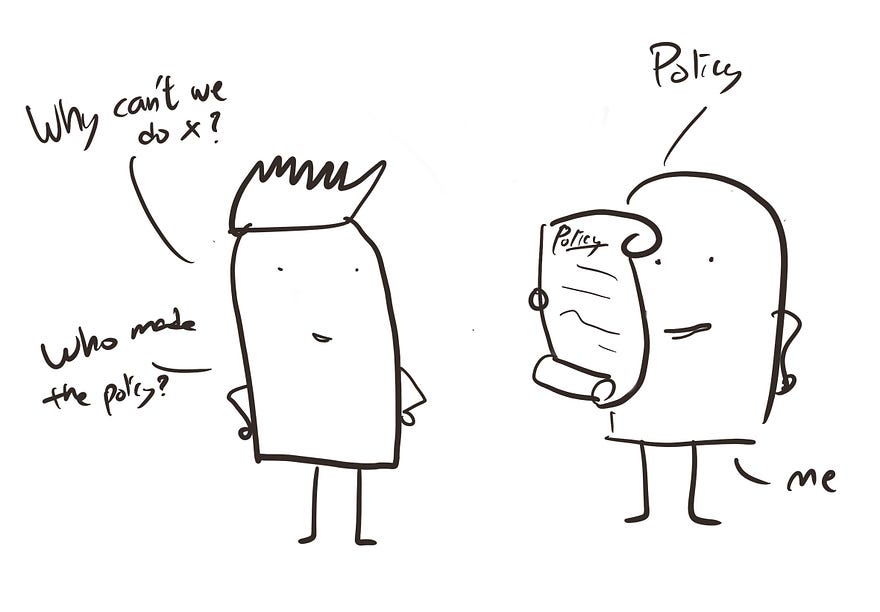
Do you hate it when you ask the same questions from two different person under the same department and getting 2 different responses? It happens quite often in a big company, it feels unprofessional and I certainly don’t want other team to feel the same towards the design team.
Stakeholders will often challenge your or are just generally curious — “Why did the design team made that decision and what was it based on?”
If your team had exist for a while and you haven’t codify your thought process, you are not running it very efficiently. Having a clear policy document helps free you the headache of coming up with an explanation ad-hoc, make your decision more transparent, and avoid giving contradictory answers. Ultimately, having clear policies will help your team earn respect from others because someone (you) has taken the time to think about how your team make decisions.
A policy is a way to articulate our thinking process. Once you articulate it, your rationale became clear. People can debate around it and you can work on improving it. If you have a good policies in place, you can save your mental energy to react to the outliers, not repeatable problems, the HARD problems. Most importantly, it allows you to scale the team because everyone on your team understand your rationale so they can act on your behalf. You remove the scenario where Designer A and B will give different answers under the same situation.
Creating a policy is not that hard, you start with the most common questions stakeholders ask and document what your team replies. Then, extract the most convincing argument or rationale from those replies and you have your version 1.0 of your design team policy. Basically, if someone asks your team a hard question. Ask yourself is this question likely to come up again/ has it already been ask, if so, create a policy to handle similar situations in the future.
8. It’s a marathon, pick your fight strategically
A real leader focuses on the big picture and pick their fight carefully. Your bigger goal for the design organization should always be demonstrating the value of design and drive design maturity of the business. You don’t need to win every battle, you just need to win the war. Otherwise, you will make too many enemies along the way and you will be so sucked into debates that you can’t work on the important things.
Picking a fight is an art on its own. Is it important to CC everybody when the developer misses the UI by one pixel? (Pro tip: no) What is something that you should never back down? Where do you draw the line? One helpful exercise you can do is to list out the design policies from your team. Then, as a team decide on which policies is the most important and rank them in descending orders.
For example, you might decide the following policy must be followed at all time: “We always conduct research on new features or when we work on project that lasts longer than x month” while the next one is negotiable: “all designs should follow the latest design system unless an exception has been obtained”.
This way, you communicate effectively to your team what is strategically important and you can focus your effort on battles that are meant to be won and be okay to lose the less important ones without diverging from the big picture.
9. Make sharing your work your top priority
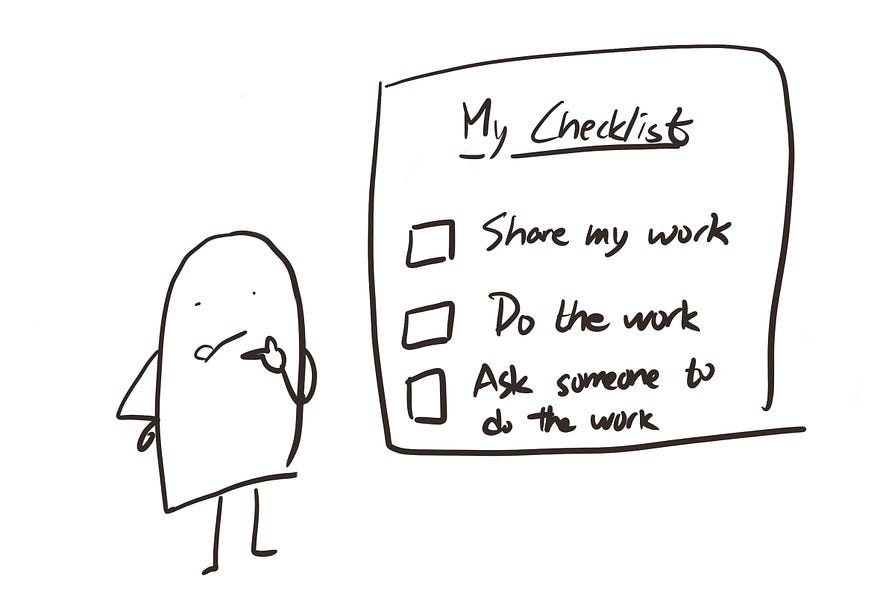
Share your work constantly instead of doing it as an after-thought — It is not other people’s job to know what you do. It is YOUR JOB to sell yourself and to educate other people the value of design, how it can help the business and how it can help THEM.
In a big corporate, if a tree falls in a forest and no one is around to hear it, it doesn’t make a sound. One of the mistake I had was not putting enough time to selling our team to the wider organization, so our team are essentially invisible to the higher ups. Not good. As a manager, if you learned that your team didn’t have time to share their work because they are busy, guess what? It is your job to do it now. As mentioned in Point 2 above, this is essential to the long term survival of your team.
Think strategically on who you want to sell your work to, which project to sell, what is the message, the communication channel, frequency and what is the ask for the audience. What call-to-action do you want this person to do? More funding for your team? Public praises? Show up in the next usability session? You want to make it clear. Spend more time to figure out how to best position yourself in the organization and you will have an easier time climbing the corporate ladder.
10. Find the best and learn from them
It’s a big company, it is full of very bright people. However, by nature of normal distribution, 90% of people are mediocre, 5% are top performers, the rest are waiting to get fired. Focus your time on the top 5%. Analyze what they do, how they sell themselves, how they do problem solving. What are they doing that you are not doing? How can you close that gap?
I don’t have the brightness mind in the company, but it doesn’t matter. I can observe good people and learn from them. I used to keep a journal of top performers of the company and I constantly ask myself what is their mindset, what are they doing right now, and what would they do in this tough situation?
If you are able to articulate WHY someone is good, WHAT makes them good and HOW you can close that gap, you will have a great lead in personal development.